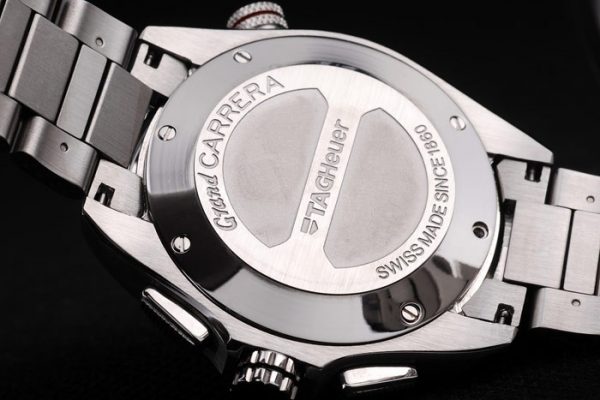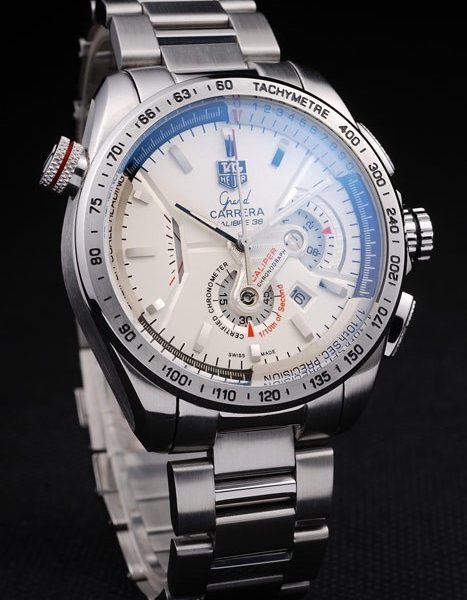Vintage racing TAG Heuer Monza Calibre 17
In 1976, TAG Heuer launched the Monza model, named after the world-famous Italian Formula 1 circuit. Forty years later, the Monza Calibre 17 looks back on the glory days of racing while offering more than a vintage design. Read on for an in-depth review of the WatchTime archives and original photos from OK-Photography. 
There’s good news for fans of the retro look – Monza is back. Good news for racing fans, too, with a design that is just as vibrant and full of automotive references as the original 1976 version. It’s also remarkable because replica TAG Heuer has tried a more refined version in the last 15 years without the black coating and colorless dial elements.
The Calibre 15 has a small seconds subdial set at 10 o’clock, giving the original Monza a strikingly asymmetrical look. TAG Heuer has omitted this bold design element from its latest version, partly due to its use of the ETA 2894 movement, known at TAG Heuer as Calibre 17. This standard movement reverses the position of the small seconds and minutes counters and moves the crown to the right side of the case.
These changes favor the new Monza, giving it a sporty and relaxed look without being as characteristic as the original. Whatever it loses in terms of coolness, it gains from the polished and matte finish of the cushion-shaped case. Titanium contributes to its excellent wearing comfort, and the titanium carbide coating makes it highly resistant to scratches.
The ETA 2894 is a modular clock based on the ETA 2892 three-hand movement, so the crown is positioned lower on the case than the chronograph pushers. Despite the size of the pushers, their pressure points are not perfect. The start-stop button on the watch we tested had a noticeable delay in responding when timing.
The rate results for the best replica watches were generally acceptable. However, the timing recorded an outlier at the “dial down” position, which negatively impacted the average results of our rigorous rate tests. On the positive side, there was a low gain of 2.5 seconds per day without the meter timing turned on, compared to 4.5 seconds per day while running. Wear tests on the wrist showed deviations between 0 and +6 seconds per day.
The perforated calfskin strap also fits perfectly with the automotive appeal of the Monza design, as does the sporty case and dashboard-style display. The strap ends in a functional and well-executed folding clasp with pushers made of PVD-coated titanium. Its clamping clasp mechanism allows for precise adjustment. It compresses the strap when closed, albeit not to the extent of a clasp-like watch.
